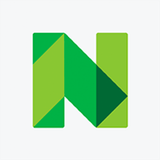3 Tips for Building Wealth in Your 40s
Learn how to invest money, open and update your retirement accounts, and keep the markets in perspective.

Many, or all, of the products featured on this page are from our advertising partners who compensate us when you take certain actions on our website or click to take an action on their website. However, this does not influence our evaluations. Our opinions are our own. Here is a list of our partners and here's how we make money.
The investing information provided on this page is for educational purposes only. NerdWallet, Inc. does not offer advisory or brokerage services, nor does it recommend or advise investors to buy or sell particular stocks, securities or other investments.
Making room for all of your financial goals will always be a challenge. But in your 40s, the reminder to save and invest for the future — your future — should be front and center.
It’s never too late to get started. The good news for investors in their 40s is that while your time horizon may be shrinking, there’s still plenty of time to make up lost ground if you’re an investing late bloomer.
Brokerage firms | |
|---|---|
1. Calculate exactly what you have and set some goals
Once you’re in your 40s, you may have accumulated several open bank accounts and investment accounts. Now is the time to inventory all your financial holdings and set up a system for tracking them all in one place so you know exactly what you have and where it is.
However, the amount of money in your portfolio is an incomplete measure of your financial wellness. A more accurate picture considers current and future savings, spending, investment returns and inflation. That’s why now is an excellent time to think about choosing a financial advisor who can help you understand whether you’re on track to achieve your financial goals and, if not, what to do to get there. In your 40s, even small adjustments can significantly improve your future quality of life.
A good retirement savings calculator can also do some of the heavy lifting. It’ll show how much your current savings and estimated Social Security benefits will provide in monthly retirement income, play out different saving and spending scenarios and provide a rundown of measures to take.
2. Open and update retirement accounts
In your 40s, pricey life events will vie for a piece of your paycheck for the next few decades. Waiting another 10 years to start saving and investing could force you to take on more risk than you might be comfortable with and take more drastic measures to slash your cost of living so that you can retire at a reasonable time. That’s why opening, funding and investing retirement accounts can be very important in your 40s.
Here’s an overview of the most common types of retirement accounts.
Individual retirement accounts (IRAs)
An individual retirement account (IRA) is a tax-advantaged investment account used to save money for retirement.
Depending on the type of IRA, contributions grow on either a tax-free or tax-deferred basis.
There are several types of IRAs, including traditional IRAs and Roth IRAs for individuals, which offer different tax advantages. There's also the SEP IRA and SIMPLE IRA for business owners and self-employed individuals.
Because IRAs are intended to be used for retirement, there are strict withdrawal rules: You may face a 10% penalty and income taxes if you withdraw money from a traditional IRA before age 59 ½, unless you qualify for an exception.
The table below highlights the differences between Roth IRAs and traditional IRAs.
401(k)s and 403bs
A 401(k) plan is an employer-sponsored retirement account that allows employees to directly contribute a portion of their paycheck in a retirement savings account. A 403(b) plan is a tax-advantaged retirement savings account offered by nonprofit organizations, public schools and religious institutions to their employees. It's very similar to a 401(k) plan offered by employers in the private sector.
Often, employers match part of these contributions, but it is not required.
You decide how to invest the money in your 401(k) account based on the investment options your employer’s plan provider offers (typically target-date funds and other mutual funds).
Once you invest your 401(k) money, it can grow tax-deferred, meaning you don’t pay capital gains tax on your investment profits while they’re in the account.
There are two main types of 401(k) plans: traditional 401(k)s and Roth 401(k)s. The type of plan you have determines what tax advantages you can receive, either now or during retirement.
The traditional 401(k) is funded with pretax money, and withdrawals in retirement are taxable.
The Roth 401(k) takes after-tax contributions, and withdrawals in retirement are tax-free.
The table below highlights the differences between traditional 401(k)s and Roth 401(k)s.
Rollovers
By now, you’ve probably been around the work block a few times, hopping from one job to better gigs and maybe even changing careers. You might have several 401(k) accounts open.
Life is busy enough. Who wants to spend time logging in to multiple accounts at various financial institutions? A 401(k) rollover is a way to consolidate those accounts so the money is easier to manage (you might also pay lower fees and get more investment choices too).
A 401(k) rollover is when you take money out of a 401(k) account and move it into another tax-advantaged retirement account. Many people roll their 401(k) into an individual retirement account (IRA), but you may also be able to roll your balance into another 401(k).
You have 60 days from the date you receive the cash or assets from your 401(k) to put it into another retirement plan (after 60 days, you face a 10% early withdrawal penalty and additional income taxes). You can (and often should) opt for a direct rollover instead, which means the money goes directly into the new account.
3. Set up an asset allocation strategy
Asset allocation is the distribution of a portfolio's assets into various asset classes, such as stocks, bonds, cash, real estate or alternative investments.
In general, the closer you get to retirement age, the less risk you can afford to take on without jeopardizing your retirement. That means ratcheting down exposure to stocks and increasing the portion of your portfolio dedicated to more stable investments.
Using the asset allocation in Vanguard target-date retirement funds as a guide, people who plan to retire in roughly 25 years would have 90% of their money in stock funds and roughly 10% in bonds. About 15 years before retirement, exposure to stocks drops to 76% and bonds rises to 23%.
Exactly how much should you be exposed to stocks in your 40s? That depends on your risk tolerance, your financial goals, your retirement income needs and your unique financial situation. Will you continue to work past retirement age and bring in income? Will you be able to get by on less during down years in retirement?
This is another reason it’s often helpful to engage with a financial advisor in your 40s. A financial advisor can help you decide how to allocate your assets, how to diversify your investments, how to set realistic retirement goals and how to plan for other big-ticket events such as home purchases or sales, college tuition bills, inheritances and travel.

